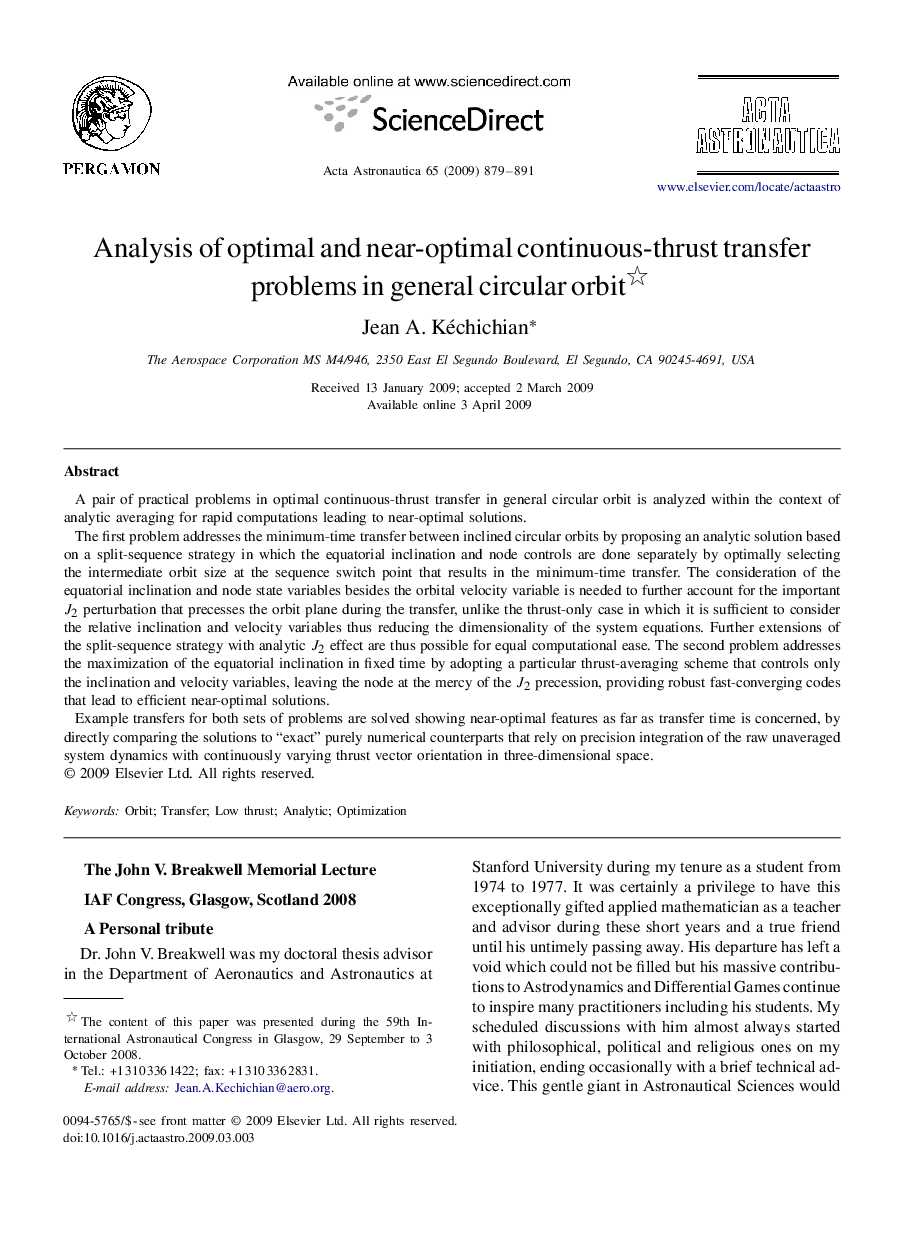| Article ID | Journal | Published Year | Pages | File Type |
|---|---|---|---|---|
| 1716596 | Acta Astronautica | 2009 | 13 Pages |
A pair of practical problems in optimal continuous-thrust transfer in general circular orbit is analyzed within the context of analytic averaging for rapid computations leading to near-optimal solutions.The first problem addresses the minimum-time transfer between inclined circular orbits by proposing an analytic solution based on a split-sequence strategy in which the equatorial inclination and node controls are done separately by optimally selecting the intermediate orbit size at the sequence switch point that results in the minimum-time transfer. The consideration of the equatorial inclination and node state variables besides the orbital velocity variable is needed to further account for the important J2J2 perturbation that precesses the orbit plane during the transfer, unlike the thrust-only case in which it is sufficient to consider the relative inclination and velocity variables thus reducing the dimensionality of the system equations. Further extensions of the split-sequence strategy with analytic J2J2 effect are thus possible for equal computational ease. The second problem addresses the maximization of the equatorial inclination in fixed time by adopting a particular thrust-averaging scheme that controls only the inclination and velocity variables, leaving the node at the mercy of the J2J2 precession, providing robust fast-converging codes that lead to efficient near-optimal solutions.Example transfers for both sets of problems are solved showing near-optimal features as far as transfer time is concerned, by directly comparing the solutions to “exact” purely numerical counterparts that rely on precision integration of the raw unaveraged system dynamics with continuously varying thrust vector orientation in three-dimensional space.
